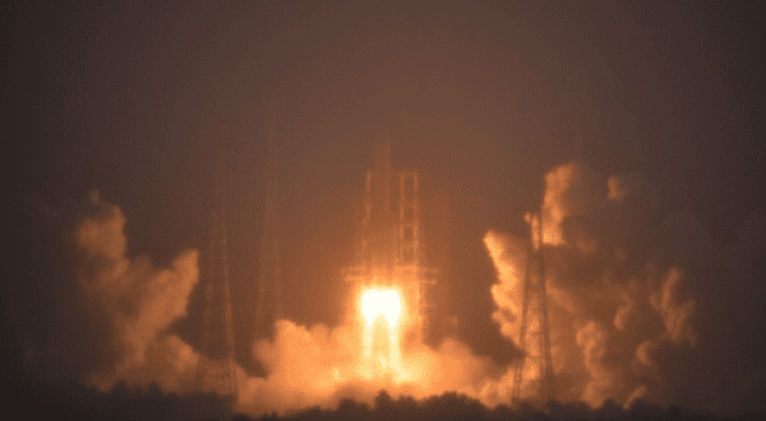Chang'e-6 Mission Takes Off Towards the Moon's Far Side
especiales

China launched the Chang'e-6 spacecraft to collect and return samples from the moon's far side -- the first endeavor of its kind in the history of human lunar exploration.
RELATED:
A Long March-5 rocket, carrying the Chang'e-6 spacecraft, blasted off from its launchpad at the Wenchang Space Launch Site in province of Hainan at 5:27 p.m. (Beijing Time).
Approximately 37 minutes after liftoff, the Chang'e-6 spacecraft separated from the rocket and entered its planned Earth-Moon transfer orbit, which had a perigee altitude of 200 kilometers and an apogee altitude of about 380,000 kilometers.
The launch of the spacecraft was a success, the China National Space Administration (CNSA) announced, adding that the Chang'e 6 mission, destined for the Apollo basin within the South Pole-Aitken Basin, could shed light on the origins and evolution of the moon.
The probe consists of four components: an orbiter, a lander, an ascender, and a re-entry module. The ascender will play a crucial role in transporting lunar samples collected by the lander to the lunar orbiter.
The samples will be transferred to the re-entry module on the orbiter, which will bring them back to Earth for analysis in laboratories.
With an estimated duration of 53 days, this mission reaffirms China's position in the select group of countries that have successfully collected lunar samples.
The mission will carry four payloads developed through international cooperation, with scientific instruments from France, Italy, and the European Space Agency aboard the Chang'e 6 lander, while a small satellite from Pakistan will be aboard the orbiter.
China's most recent lunar probe, Chang'e 5, traveled to the satellite in 2020 and collected 1,731 grams of terrain samples. The Chang'e program, which began with the launch of the first probe in 2007, is named after a goddess who lived on the Moon according to Chinese legends.
In recent years, Beijing has heavily invested in its space program and achieved milestones such as the successful landing of Chang'e 4 on the far side of the Moon in January 2019, an achievement no other country had reached to date.














Add new comment